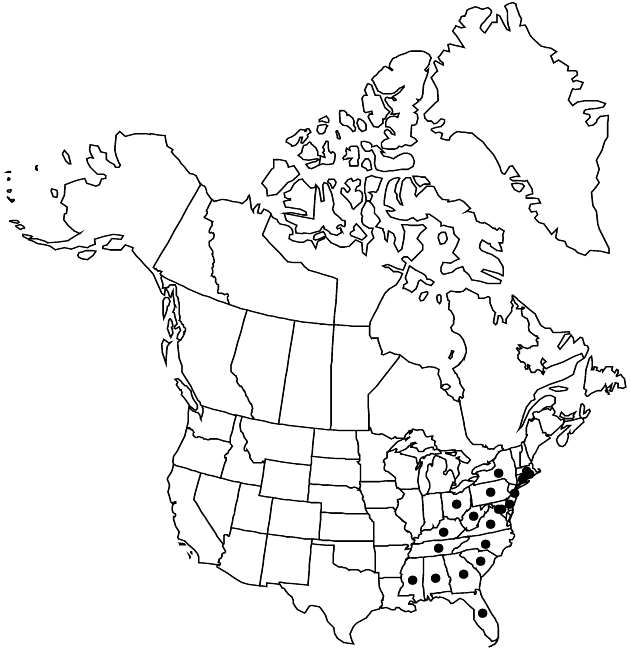Prenanthes serpentaria
Fl. Amer. Sept. 2: 499, plate 24. 1813.
Plants 50–200+ cm; taproots short and thick, with lateral storage roots. Stems erect, green to reddish or purple mottled, proximally glabrous, distally sparsely tomentulose. Leaves: proximal often withered by flowering; petiolate (petioles 1–10 cm, often with pair of lobes); blades deltate to ovate or elliptic, 5–20 × 4–10 cm, coriaceous, margins usually deeply, pinnately 3–5-lobed, lobes and sinuses large and ± rounded, sometimes deeply cleft to base or palmately divided, apices acute or obtuse, ultimate margins entire or dentate, faces glabrous or finely tomentose on veins; cauline sessile or petiolate; distal reduced in size and lobing, often entire. Heads (6–12 in nodding clusters) in broad, paniculiform to corymbiform arrays (often widely branching and subdichotomous, at least some branches elongate). Calyculi of 8–10, green to purple, triangular to subulate bractlets 1–4 mm, often tomentulose to setose. Involucres cylindric (often attenuate basally to bracteate peduncles), 12–15 × 4–5 mm. Phyllaries (7–)8–(10), green or often purple, narrowly lanceolate to elliptic, 10–13 mm, sparsely hispid to appressed, coarsely setose, often reduced to single coarse, appressed seta (setae green or tan). Florets (8–)10–14(–19); corollas usually yellow to pale yellow, 9–15 mm. Cypselae golden brown to light tan, subcylindric, subterete or angled, 5–8 mm, indistinctly 8–10-ribbed; pappi tan, 7–8 mm. 2n = 16.
Phenology: Flowering Aug–Oct.
Habitat: Oak-hickory woodlands, borders, oak flats, pine woods, sandy areas
Elevation: 100–1700 m
Distribution

Ala., Conn., Del., D.C., Fla., Ga., Ky., Md., Mass., Miss., N.J., N.Y., N.C., Ohio, Pa., R.I., S.C., Tenn., Va., W.Va.
Discussion
Prenanthes serpentaria is generally recognized by its large, deeply 3–5-lobed proximal leaves with rounded sinuses and lobes, winged petioles, attenuate involucres, sparsely setose phyllaries, and yellow corollas. The leaves are variable in size and lobing, often on the same plant. Some specimens have predominantly ovate to elliptic, unlobed leaves, and these have been variously recognized. Some specimens appear to combine characteristics of P. crepidinea or P. trifoliolata and may be the result of recent or ancient hybridization. The species boundaries in this group merit further study.
Selected References
None.
